No products in the cart.
Table of Contents
Need something to add up attraction to your plant collections? Planning to plant something that could add life to your home? This beautiful and considered most-loved calathea houseplant got you covered!
Calathea roseopicta or Rose-painted Calathea is not just a pretty name. It is literally an amazing plant, blessed with gorgeous rose-colored centered leaves with dark green borders. The red-purple undersides of the leaves are more visible at night when they fold up.
Belonging to the prayer-plant family, this Calathea has its large leaves facing upward, as if praying. Originating in Brazil, Calatheas are known to have unique foliage and our Calathea Roseopicta is not an exception to this beauty. Its tropical vibe is surely a refresher.
Calathea Roseopicta Plant Care Basics
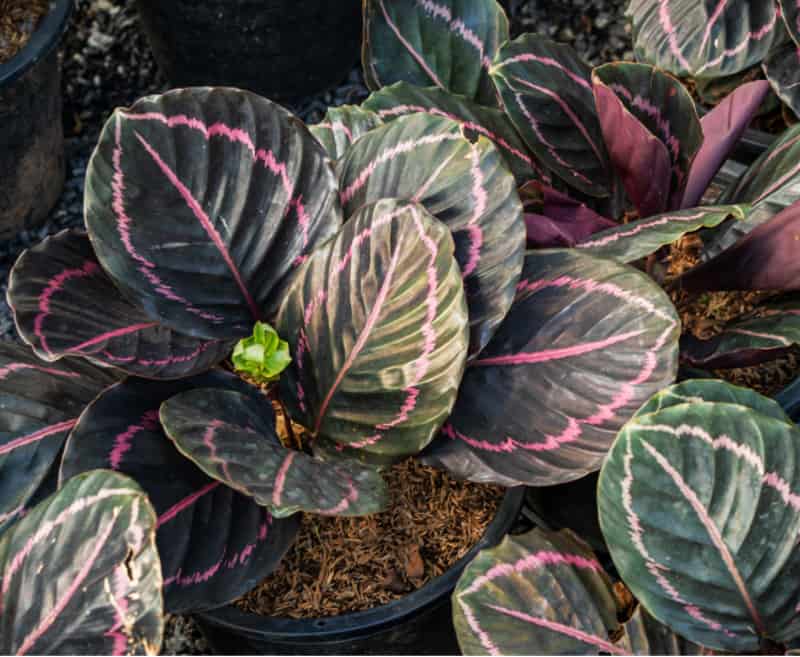
When given the proper care, Calathea roseopicta can stand out and give your house an additional glow. Below are some of our care tips!
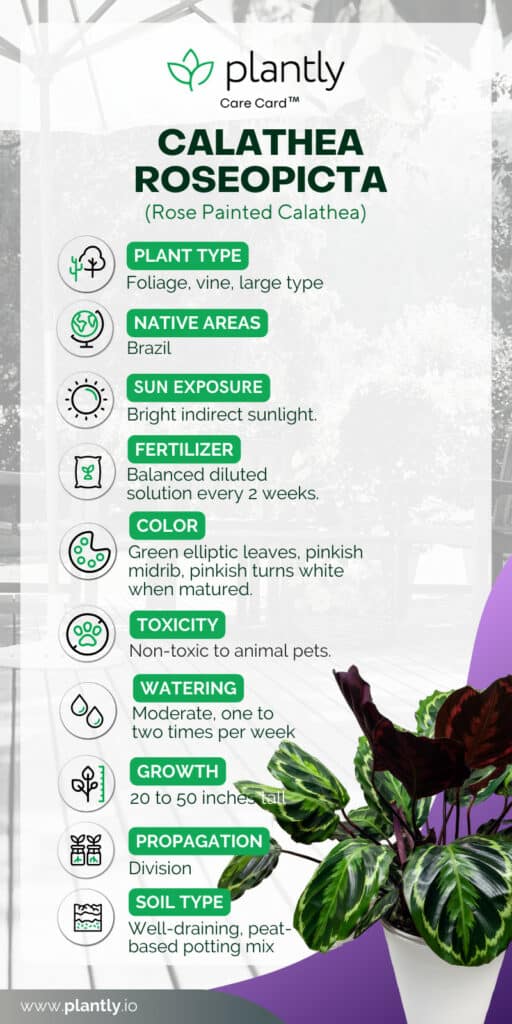
Calathea roseopicta is a difficult plant to care for, but it’s ideal if you’re searching for a show-stopper! Continue reading to learn everything you need to know about caring for Calathea roseopicta and growing it in your own home.
Soil
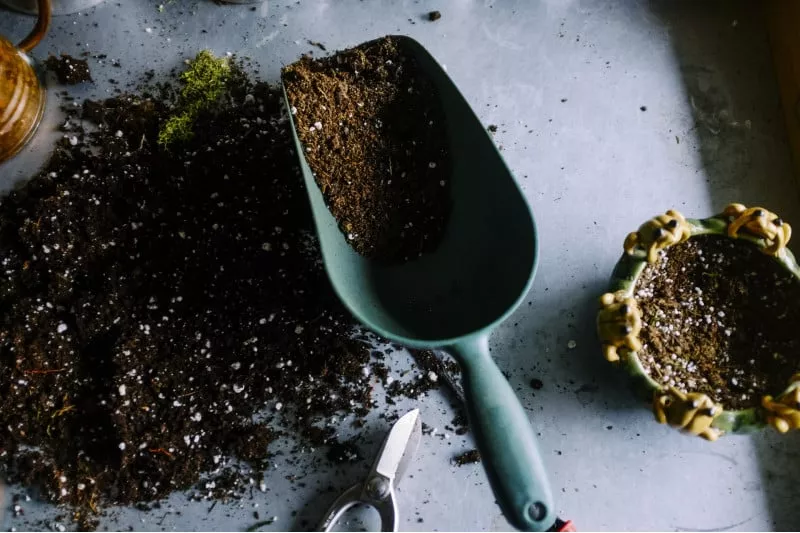
The soil must be fast-draining and have an adequate aerating structure to keep the roots supplied with oxygen at all times, even after a complete soaking. The soil should always be moist, like that of a rainforest.
Some growers like a soilless mix, but you can use standard potting soil and add perlite to promote aeration. To get a mix with enough “fluffiness,” you may need to add anywhere from a fifth to a third of a cup of perlite.
The soil should quickly absorb the water. If water pools on the surface, the potting mix is probably too dense and not draining effectively enough. You may add a coco coir amendment, which should be able to hold a lot of water.
Watering Needs
Many new Calathea roseopicta owners make mistakes when it comes to watering. It can be difficult to strike the perfect balance because this outdoor plant prefers damp soil but despises standing in water. Try watering a little bit numerous times a week during the growing season, as soon as the top of the soil has dried off.
If you’re not sure what the moisture levels are, stick a finger into the soil to avoid careless watering. You can lessen the frequency of watering throughout the winter when the plant produces less or no new growth. Allow half of the soil to dry out, but never to the point of being bone dry!
During this time, you’ll probably only water once a week or less.
If you’re watering your Calathea roseopicta properly but it’s still not doing well, consider switching to distilled or rainwater. The minerals in our tap water are sensitive to this plant, as they are to many others. Remember to flush the soil with distilled water on a regular basis.
Instead of watering on a schedule, keep a close eye on the soil. This is why the plant is referred to as high-maintenance. You can’t disregard your Calathea rosepicta without consequences.
Ideal Lighting
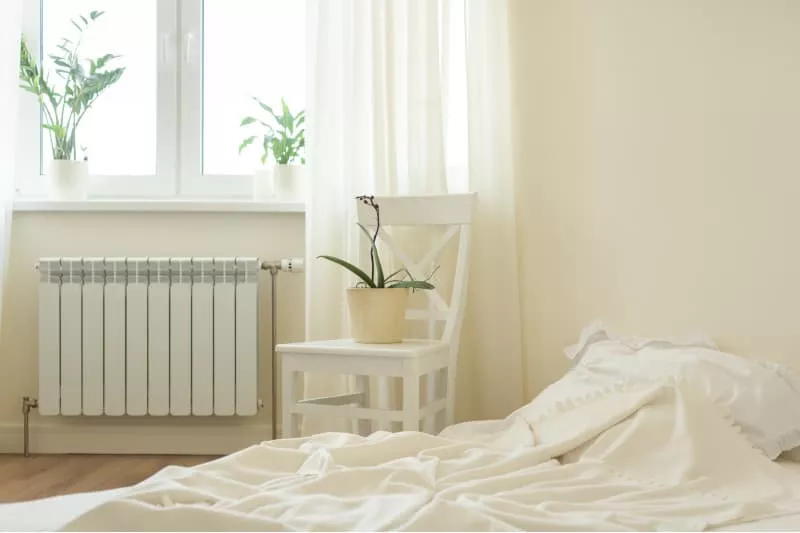
Because this plant cannot tolerate direct sunshine, it must be planted in a location with bright but indirect light. It’s frequently advertised as being ideal for very dark environments, but this is regrettably a fallacy. Calathea roseopicta may survive in low-light conditions, but it will not thrive or produce new growth.
If treated as an indoor plant, place it on a windowsill or near a window that receives a lot of light during the day. The darker the leaves, the more light a plant requires to keep its brilliant color.
If you don’t give a Calathea roseopicta ‘Dottie’ adequate light, it may revert to greenish leaves.
Calathea roseopicta may thrive in the following light conditions: inside a bright room but protected from intense light; six to ten feet from a window facing north, west, or east; just outside the reach of direct sunlight. Or, a location with sufficient artificial illumination.
As the number of daylight decreases in the winter, you can compensate by moving your Calathea to a sunny windowsill.
Temperature & Humidity
Given that they are tropical plants, it should come as no surprise that they do not survive in chilly environments. The optimal temperature for a Calathea Roseopicta is between 64 and 75 degrees Fahrenheit (18 and 24 degrees Celsius). Temperature-related damage does not occur until the temperature falls below 16°C (61°F).
It’s also vital to prevent drastic temperature changes, as this plant doesn’t adapt well to them.
Room temperature is fine: if you’re comfortable, your Calathea will be as well. Avoid drafts by keeping the plant a few inches away from cold winter windows and air conditioners. Also, stay away from heaters because the air surrounding them will be excessively dry.
Calatheas like high humidity, which is a spreading secret that everyone knows. They are ideal houseplants in terms of temperatures and the need for mild indirect light, but humidity is the problem if you don’t live in a tropical climate. Low humidity can cause leaf edges to discolor and tear.
Calathea roseopicta tolerates no less than 40% humidity and enjoys well over 60%, however, a good watering routine helps the plant adapt. Use pebble-filled water trays and gather plants together to enhance humidity a few points, or use a room humidifier for an industrial approach.
Fertilization
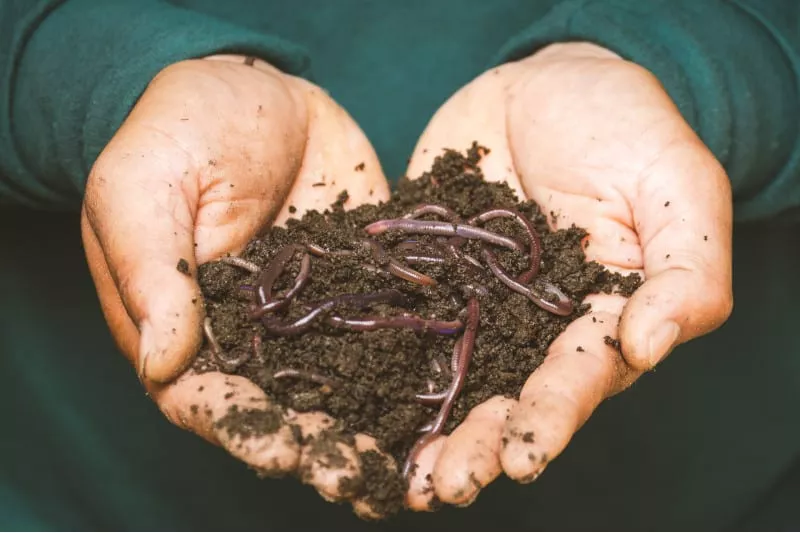
Calathea can benefit from fertilizer, although it is not required all year. The spring and summer, when the plant is generating new leaves, is the optimal time to apply these supplements. When this is not the case, knowledgeable planters and gardeners advise their clients not to use fertilizers on Calathea plants.
Despite all of the effort that goes into developing its beautiful leaves, the Roseopicta is a light feeder. Plants cultivated in a soilless mix will require fertilization to maintain fertility, but those planted in nutrient-rich soil may not.
Fertilizer is divided into two types: organic and inorganic. Synthetic fertilizers can be effective and cost-efficient but only use 1/4 to 1/2 of the recommended amount. Roseopicta’s roots are sensitive, and leftover fertilizer can easily burn them.
However, organic fertilizers use natural ingredients like worm castings, blood meal, and fish emulsion to boost fertility organically. These are generally harmless for the plant and provide a healthy soil environment.
Fertilize only during the growing season, when the plant is able to absorb it. Fertilizing in the fall or winter might result in a toxic accumulation in the soil from the unused formula.
Propagation
If you want to grow a prayer plant, you should divide it. After all, these are clumping plants, and if you examine a mature Calathea attentively, you’ll discover that it almost always consists of numerous clumps of leaves.
Because it’s difficult to tell where one leaf cluster stops and another begins, it’s best to grow your prayer plant outside of its container.
Carefully remove your Calathea from its pot and shake off any extra soil from the roots; distinct clumps will often come loose and separate at this stage. You can also separate them yourself with care. Carefully untangle the roots, but don’t be concerned if you have to cut a couple.
Make sure you’re using sanitized shears or scissors.
Each cluster should have its own set of roots. It doesn’t have to have a lot of leaves (even one is sufficient), however the more the better. Unfortunately, propagating a prayer plant from cuttings is impossible.
This is due to the absence of stems and the absence of the required cells for root formation in leaf clusters.
Growth Zone
Rose-painted calathea is a small sensitive perennial leaf plant with a clump-forming habit that normally grows up to 2o inches tall, but can occasionally reach 2 feet. This Marantaceae species is recognized for its exceptionally attractive foliage and dark green leaves, just like other members of its family.
The lovely leaves are huge and rather rounded, dark green on top and crimson to magenta on the bottom.
You can grow this plant in areas under USDA growth zones 10 to 11.
Potting
Plastic nursery pots should suffice as containers. The bottom perforations allow excess water to drain, but the plastic layer prevents the soil from entirely drying up. You may water the plant by placing the nursery pot inside a stylish outer pot.
Once it has drained completely in the sink, replace it.
For the first 1-2 years, the Calathea Roseopicta green can be kept in its original pot. Check the bottom of the pot for huge, white roots protruding from it. This indicates that Ruby is ready for repotting.
For the ideal Calathea potting mix, combine peat-free soil, perlite, and orchid bark.
Pruning
Trim away dead leaves and wasted blossoms on a regular basis. This eliminates breeding grounds for viruses and pests. It also allows you to inspect the plant for bugs or other issues.
Always, use sharp scissors or shears to make the cuts. Before and after each usage, sterilize your cutting equipment. You can wipe the blades in isopropyl (rubbing) alcohol for a quick fix.
You should cut the stems down to the soil level. Remove any dead or dying material, but don’t cut off a leaf that still has some green on it. Worry not, the plant will naturally shed old outer leaves, but keep an eye out for many yellow leaves, especially if they are close to the plant’s center.
Calathea Roseopicta Varieties and Similar Plants
One of the most common varieties or similar plants of Calathea Roseopicta is the Calathea Roseopicta Dottie. Some of its famous and lovely varieties are:
- Calathea Roseopicta Eclipse
- Calathea Roseopicta Little Princess
- Calathea Roseopicta Medallion
- Calathea Roseopicta Illustrus
Calathea Roseopicta Diseases & Pests
Pests
Common houseplant pests love to visit every plant just because that’s what they are made of. Your Calathea Roseopicta may not be an exception to these pets when they are not frequently checked. Some of these pests that may visit your plants are Mealybugs, aphids, scale, and spider mites.
Mild insecticidal soaps, aside from cotton balls soaked with alcohol, are the safest way to wipe them off.
Diseases
Bacteria and Fungi
They can be one of your major problems aside from root rot. They usually attack when the leaves of your Calathea roseopicta are wet at all times. Make sure you do not over mist your leaves and keep water off your plant’s leaves as much as possible.
Root rot
It occurs, as usual, when you overwater your plant. Do not just stick to your regular water regime, instead, always check the soil of your plant to know if it needs a drink or not yet.
Yellowing of Leaves
It’s also one effect of overwatering. That’s why it is always important to check the soil before watering your plant.
Brown and Crisp Leaf Edges
This can be caused by low humidity. Calathea Roseopicta loves high-humidity surroundings, and your humidifier or misting talent can help. One cause of this is too much exposure to sunlight. Remember that your beautiful Rose-painted Calathea likes it bright, but never direct.
Frequently Asked Questions
Curling of your Calathea roseopicta leaves may be a cause of underwatering. Remember that your Rose-painted Calathea likes misty soil. Make sure to water it accordingly without oversaturating it.
If not overwatering, the main reason why your Calathea roseopicta is dying is because of dry soil, and dry soil means not being able to water it when needed. It’s always wise to check your plant’s soil before watering.
Lighting triggers the opening and closing of Calathea. If your Calathea roseopicta is not opening, there is a huge possibility that it is not receiving the proper light it needs to open, as much as it wouldn’t close if it receives too much light at night.
This amazing plant could be bought at Plantly where all of your favorite plants are at it’s best! Grab yours here at Plantly and begin your green journey with us!
Whether you want to buy, sell or simply reach out to other plant enthusiasts, Plantly is the right place to be!


